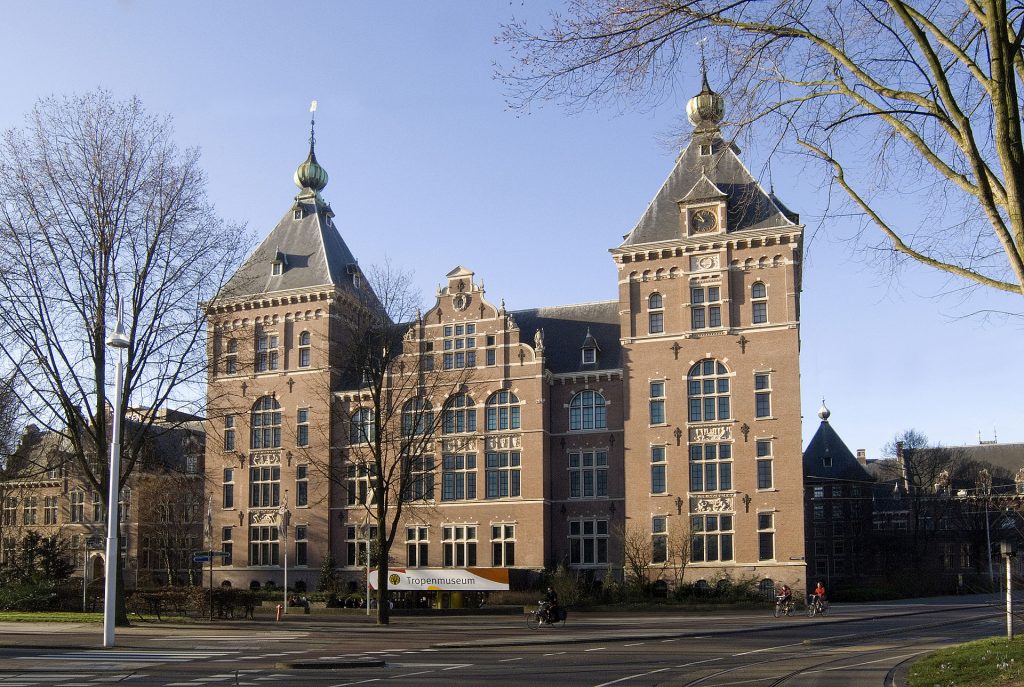CAA News Today
Announcing the 2021 Awards for Distinction Recipients
posted by Allison Walters — Feb 10, 2021
Honorees this year include Samella Lewis, Deborah Willis, Kenneth Frampton, and many other scholars, artists, and teachers, including special commendation for service to art historical scholarship to Gillian Malpass.
CAA Annual Conference, February 10-13, 2021
We are pleased to announce the recipients and finalists of the 2021 CAA Awards for Distinction. Among the winners this year is Samella Lewis, recipient of the 2021 Distinguished Artist Award for Lifetime Achievement. She was the first African American to earn a PhD in art history at Ohio State University. Mentored by Elizabeth Catlett and Charles White, Lewis embodied the visual culture of the civil rights movement through her prints. In addition to her studio practice, Lewis advocated African American art by writing for and creating exhibition venues. Her book, African American Art and Artists, originally published in 1978, was updated in subsequent editions and remains an important examination of more than two centuries of Black art and artists in the United States. For decades Lewis was a committed educator and scholar. In addition to her Fulbright, Lewis has been honored with a Charles White Lifetime Award (1993), with a UNICEF Award for the Visual Arts (1995), by being named a Getty Distinguished Scholar (1997), and by being interviewed by the HistoryMakers Archives (2003).

Deb Willis
and
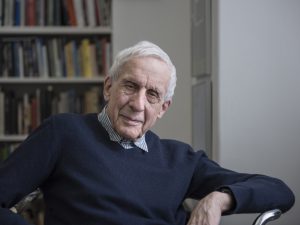
Kenneth Frampton Photo credit: Alex Fradkin
Deborah Willis and Kenneth Frampton are the recipients of the 2021 Distinguished Lifetime Achievement Award for Writing on Art.
Deborah Willis has opened the field of African American photography. When the invention of photography coincided with the promise of abolition, a new arc of aspiration was combined. Its new pictures, thought to be the work of light itself, began to transmit images so that, as Frederick Douglass said, “Men of all conditions may see themselves as others see them.” From the first, photographs and photographic studios proliferated inside the Black community. It is the true extent of this practice that has been revealed by the lifework of Deborah Willis. In effect she has acted as its archaeologist, sifting through the layers from the time of Louis Daguerre to the surface of our present, retrieving the images and researching their histories.
Kenneth Frampton, trained as an architect, is a prolific architectural historian and critic who has managed to face the behemoth of globalized capital with an enduring version of humane modernity. Frampton has been writing about architecture for over half a century. A model of the architect-scholar, Frampton not only opens new cosmopolitan perspectives on the work of widely influential architects from Le Corbusier and Louis Kahn to Zaha Hadid and Álvaro Siza Vieira with his scholarship but also gives due attention to transitional spaces and movements.
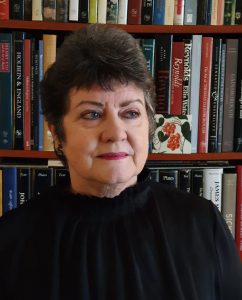
Gillian Malpass
Gillian Malpass is the recipient of a CAA Commendation for Service to Art Historical Scholarship. As publisher of art and architectural history at Yale University Press, London, Gillian Malpass assembled a matchless list of titles over three decades that set the press apart from all others. She fostered projects that were gorgeously designed, accessibly written, and beautifully illustrated, including numerous now-classic books by both emerging and senior scholars. She worked on monographs, exhibition catalogs, reference, and biography, from books examining previously unexplored fields to bestsellers. Authors of many of the most important books published in art history over the past thirty years attest in their prefaces to the ways in which Malpass’s encouragement, expertise, and eye shaped their work.
The Awards for Distinction will be presented during Convocation at the CAA Annual Conference on Wednesday, February 10 at 6:00 PM. This event is free and open to the public. A free and open registration is required.
The full list of 2021 CAA Awards for Distinction Recipients:

Sampada Aranke
Sampada Aranke, “Blackouts and Other Visual Escapes,” Art Journal, vol. 79, no. 4 (Winter 2020): 62–75

Katherine A. Bussard
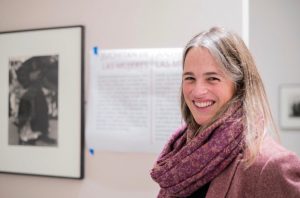
Kristen Gresh Photo credit: Oswaldo Ruiz
Katherine A. Bussard and Kristen Gresh, eds., “Life” Magazine and the Power of Photography, Princeton University Art Museum, 2020
and
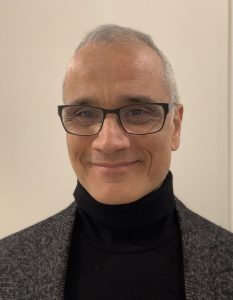
Louis Marchesano
Louis Marchesano, ed., Käthe Kollwitz: Prints, Process, Politics, Getty Research Institute, 2020
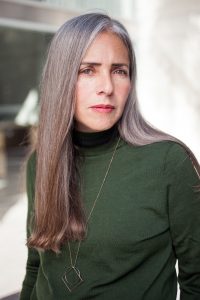
Julieta Gonzalez

Tomás Toledo

Adriano Pedrosa

José Esparza Chong Cuy
Alfred H. Barr Jr. Award for Smaller Museums, Libraries, Collections, and Exhibitions
Adriano Pedrosa, José Esparza Chong Cuy, Julieta González, and Tomás Toledo, Lina Bo Bardi: Habitat, Museu de Arte de São Paulo Assis Chateaubriand (MASP) / DelMonico Books, 2020
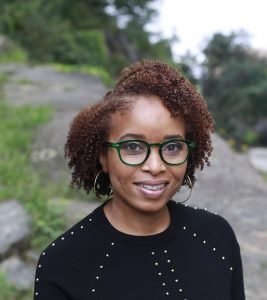
Nicole R. Fleetwood Photo credit: Bayeté Ross Smith
Nicole R. Fleetwood, Marking Time: Art in the Age of Mass Incarceration, Harvard University Press, 2020
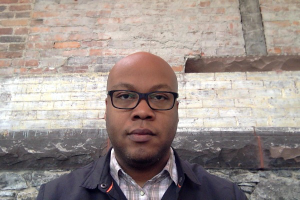
Charles L. Davis, II
Charles Rufus Morey Book Award
Charles L. Davis, II, Building Character: The Racial Politics of Modern Architectural Style, University of Pittsburgh Press, 2019
and

Nicole R. Fleetwood Photo credit: Bayeté Ross Smith
Nicole R. Fleetwood, Marking Time: Art in the Age of Mass Incarceration, Harvard University Press, 2020

Adam Jasienski
Adam Jasienski, “Converting Portraits: Repainting as Art Making in the Early Modern Hispanic World,” The Art Bulletin, vol. 102, no. 1 (March 2020): 7–30
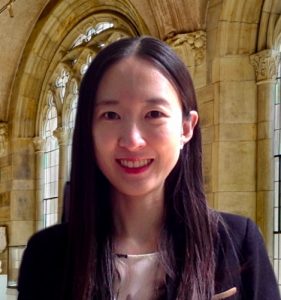
Jessie Park
Honorable Mention:
Jessie Park, “Made by Migrants: Southeast Asian Ivories for Local and Global Markets, ca. 1590–1640,” The Art Bulletin, vol. 102, no. 4 (December 2020): 66–89
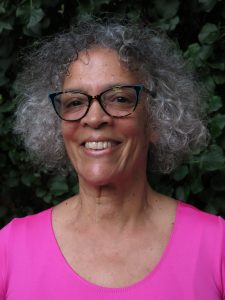
Maren Hassinger Photo credit: Ava Hassinger
Artist Award for a Distinguished Body of Work
Maren Hassinger

Nancy Odegaard
CAA/AIC Award for Distinction in Scholarship and Conservation
Nancy Odegaard
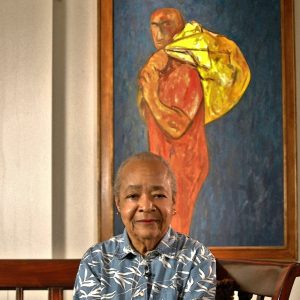
Samella Lewis
Distinguished Artist Award for Lifetime Achievement
Samella Lewis

Deb Willis
and
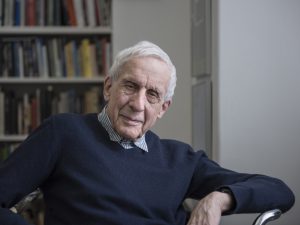
Kenneth Frampton Photo credit: Alex Fradkin
Distinguished Lifetime Achievement Award for Writing on Art
Deborah Willis and Kenneth Frampton
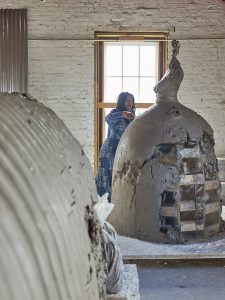
Simone Leigh Photo credit: Kyle Kodel
Distinguished Feminist Award—Artist
Simone Leigh

Katy Deepwell
Distinguished Feminist Award—Scholar
Katy Deepwell
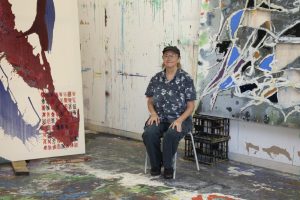
Dona Nelson
Distinguished Teaching of Art Award
Dona Nelson
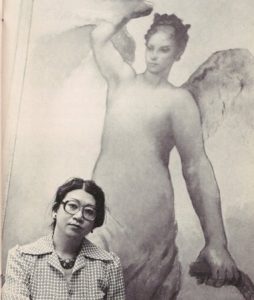
Kaori Kitao
Distinguished Teaching of Art History Award
Kaori Kitao
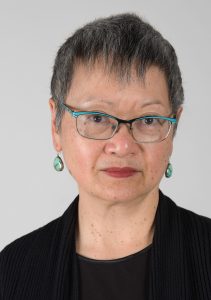
Margo Machida
Margo Machida

Gillian Malpass
CAA Commendation for Service to Art Historical Scholarship
Gillian Malpass
Learn about the juries that select the recipients of the CAA Awards for Distinction.
Guidelines from the Professional Practices Committee
posted by Allison Walters — Feb 03, 2021
CAA continues to stand in support of its members and our larger arts community to create, analyze, teach, and promote art within our higher educational institutions. In its role of responding to members’ concerns, particularly in relation to employment and various professional practices, CAA’s Professional Practices Committee (PPC) has drafted this short guide to existing CAA Standards and Guidelines to provide members with helpful vocabulary or needed disciplinary acknowledgment of standards that they may use as they are faced with institutional and economic challenges in the current environment. The below is not meant as an exhaustive list (and the PPC encourages all members to consult all of the approved Standards and Guidelines as well as the policies of the American Association of University Professors), but rather as a means of highlighting some key areas in which CAA members have come together to promote professional practices of use to us all. All of CAA’s standards are free and accessible to anyone via its website.
Hiring Contracts and Terms of Employment:
- Guidelines for the MFA Degree in Art and Design: https://www.collegeart.org/standards-and-guidelines/guidelines/mfa
- Guidelines for Part-Time Professional Employment: https://www.collegeart.org/standards-and-guidelines/guidelines/part-time
- Guidelines for Retention and Tenure of Art and Design Faculty: https://www.collegeart.org/standards-and-guidelines/guidelines/art-and-design-tenure
- Standards for Retention and Tenure of Art Historians: https://www.collegeart.org/standards-and-guidelines/guidelines/art-history-tenure
- Criteria for the Hiring and Retention of Visual Resources Professionals: https://www.collegeart.org/standards-and-guidelines/guidelines/hiring-visual-resources-professionals
- Guidelines Regarding the Hiring of Guest Curators by Museums: https://www.collegeart.org/standards-and-guidelines/guidelines/guest-curators
- Guidelines Regarding the Hiring of Catalog Essayists: https://www.collegeart.org/standards-and-guidelines/guidelines/guest-essayists
Faculty/Staff/Curator Roles:
- Guidelines for Addressing Proposed Substantive Changes to an Art, Art History, or Design Unit or Program at Colleges and Universities: https://www.collegeart.org/standards-and-guidelines/guidelines/changes
- Guidelines for the MFA Degree in Art and Design: https://www.collegeart.org/standards-and-guidelines/guidelines/mfa
- Guidelines for Associate Degrees in Art and Design: https://www.collegeart.org/standards-and-guidelines/guidelines/afa-art-design
- Guidelines for Baccalaureate Degrees in Art and Design: https://www.collegeart.org/standards-and-guidelines/guidelines/bfa
- Guidelines for Faculty Teaching in New-Media Arts: https://www.collegeart.org/standards-and-guidelines/guidelines/new-media
- Guidelines for Part-Time Professional Employment: https://www.collegeart.org/standards-and-guidelines/guidelines/part-time
- Guidelines for Retention and Tenure of Art and Design Faculty: https://www.collegeart.org/standards-and-guidelines/guidelines/art-and-design-tenure
- Professional Practices for Artists: https://www.collegeart.org/standards-and-guidelines/guidelines/practices
- Standards for the Practice of Art History: https://www.collegeart.org/standards-and-guidelines/guidelines/art-history-ethics
- Professional Practices for Art Museum Curators: https://www.collegeart.org/standards-and-guidelines/guidelines/curators
Proposed Changes to the Structure/Content of an Academic Unit:
- Guidelines for Addressing Proposed Substantive Changes to an Art, Art History, or Design Unit or Program at Colleges and Universities: https://www.collegeart.org/standards-and-guidelines/guidelines/changes
- General Principles for Academic Arts Administrators: https://www.collegeart.org/standards-and-guidelines/guidelines/art-administrators
Teaching Load:
- Guidelines for the MFA Degree in Art and Design: https://www.collegeart.org/standards-and-guidelines/guidelines/mfa
- Guidelines for Associate Degrees in Art and Design: https://www.collegeart.org/standards-and-guidelines/guidelines/afa-art-design
- Guidelines for Baccalaureate Degrees in Art and Design: https://www.collegeart.org/standards-and-guidelines/guidelines/bfa
- Guidelines for Faculty Teaching in New-Media Arts: https://www.collegeart.org/standards-and-guidelines/guidelines/new-media
- Guidelines for Part-Time Professional Employment: https://www.collegeart.org/standards-and-guidelines/guidelines/part-time
- Guidelines for Retention and Tenure of Art and Design Faculty: https://www.collegeart.org/standards-and-guidelines/guidelines/art-and-design-tenure
- Professional Practices for Artists: https://www.collegeart.org/standards-and-guidelines/guidelines/practices
- Standards for the Practice of Art History: https://www.collegeart.org/standards-and-guidelines/guidelines/art-history-ethics
Job-Seeking Resources:
- Guidelines for Part-Time Professional Employment: https://www.collegeart.org/standards-and-guidelines/guidelines/part-time
- Standards for Professional Placement: https://www.collegeart.org/standards-and-guidelines/guidelines/placement
- Guidelines for Retention and Tenure of Art and Design Faculty: https://www.collegeart.org/standards-and-guidelines/guidelines/art-and-design-tenure
- Standards for Retention and Tenure of Art Historians: https://www.collegeart.org/standards-and-guidelines/guidelines/art-history-tenure
- Criteria for the Hiring and Retention of Visual Resources Professionals: https://www.collegeart.org/standards-and-guidelines/guidelines/hiring-visual-resources-professionals
- Guidelines for Interviews: https://www.collegeart.org/standards-and-guidelines/guidelines/etiquette
- Artist Résumé: https://www.collegeart.org/standards-and-guidelines/guidelines/resume
- Curriculum Vitae for Visual Artists: https://www.collegeart.org/standards-and-guidelines/guidelines/visual-art-cv
- Guidelines for Presenting Work in Digital Formats: https://www.collegeart.org/standards-and-guidelines/guidelines/digital-format
- Curriculum Vitae for Art Historians: https://www.collegeart.org/standards-and-guidelines/guidelines/art-history-cv
- Curriculum Vitae for Museum Professionals: https://www.collegeart.org/standards-and-guidelines/guidelines/museum-cv
Status of Terminal Degrees:
- Guidelines for the MFA Degree in Art and Design: https://www.collegeart.org/standards-and-guidelines/guidelines/mfa
- Statement on Terminal Degree Programs in the Visual Arts and Design: https://www.collegeart.org/standards-and-guidelines/guidelines/terminal-degree-programs
International News: The Van Abbemuseum in the Netherlands Explores the Legacies of Colonialism in a Solo Exhibition by Victor Sonna
posted by Allison Walters — Jan 08, 2021
The following article was written in response to a call for submissions by CAA’s International Committee. It is by Ilaria Jessie Obata, an art historian and curator currently completing an MA in Curating Art and Cultures at the University of Amsterdam.
Victor Sonna’s first solo exhibition, 1525, which opened at the Van Abbemuseum in Eindhoven in July 2020, tells a multilayered story of personal introspection and shared colonial legacies. This collaboration between the artist and the museum is among the most recent exhibitions that fall under the mission scope of Musea Bekennen Kleur (Museums Confess Color), a contemporary platform established in Amsterdam in March 2020, in which “museums take accountability and responsibility through ongoing conversations about achieving diverse and inclusive institutional settings” (Musea Bekennen Kleur, https://museabekennenkleur.nl/).
The Van Abbemuseum, a participant in this project, is also one of the first museums in the Netherlands to embark upon a steady process of decolonizing its exhibitions and collections. This institutional decision was further marked by the Van Abbemuseum’s 2007 exhibition, Be(com)ing Dutch, in which participating artists Anette Kraus and Petra Bauer criticized racialized images of Zwarte Piet (Black Pete), which perpetuate the use of black face for the Sinterklass holiday (Saint Nicholas). The museum encountered severe backlash from the far-right party in the Netherlands for its criticism of the Dutch holiday, which further exposed this contested discussion within the country as whole. This response exemplified the need to continue the process of decolonizing cultural and educational platforms that perpetuate racial stereotyping. Therefore, Sonna’s solo exhibition builds upon the museum’s desire for institutional accountability regarding the Netherland’s recent past and its involvement with the trans-Atlantic slave trade. Sonna and the Van Abbemuseum decided to organize an exhibition with a dynamic narrative that would prompt discussion about contemporary colonial legacies. Working together, Sonna, Van Abbe director Charles Esche, curator Steven ten Thije, and guest curator Hannah Vollam, designed and curated an exhibition that presented Sonna’s research from multiple perspectives.
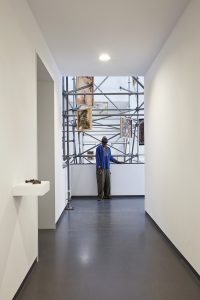
Figure 1. Victor Sonna in his 1525 exhibition at the Van Abbemuseum, 2020. Photo: Ronald Smits
Born in 1977, Victor Sonna is a visual artist who moved to the Netherlands at age nineteen from Yaoundé, Cameroon. Having studied at the Design Academy in Eindhoven and then at the AKV | St. Joost in Den Bosch, Sonna is based in Eindhoven and works in various mediums. His Van Abbemuseum exhibition includes three installations of tapestries, prints, and audio-visual material. The exhibition narrative started with his purchase of a pair of chains that once belonged to an enslaved person in New Orleans. The number 152 was engraved on these chains and thus remains the focal point for the exhibition title, 1525 (Fig. 1). Sonna’s installations regularly refer to the commoditization of human life under slavery, or rather “…the treatment of persons as property or, in some kindred definitions, as objects… when the individual is stripped of his previous social identity and becomes a non-person, indeed an object and an actual or potential commodity” (Igor Kopytoff, “The Cultural Biography of Things: Commoditization as Process,” in The Social Life of Things: Commodities in Cultural Perspective, p. 65). Sonna’s purchase led to his own research on the socio-historical impact of colonial exploitation, which constructed and perpetuated the commodification of human life for Western imperial profit.
His audio-visual works, which contextualize and document the slave trade in Ghana, are shown in six separate film installations in the exhibition. Sonna visually captured the external and internal space of Fort Elmina, a former slave trading post that was seized and consolidated by the Dutch in 1637. He documents remembrances of the trans-Atlantic slave trade, which have remained imprinted upon the walls of the fort and linger within the smell of the dungeons. The fort “plays a central role within the exhibition since the title,1525, also corresponds to the year marking the departure of the first slave ships from the West African coast to the Caribbean islands”(Harmen van Dijk, TrouwNL, 18 July 2020, translated from Dutch by the author). Sonna used this historical research to better understand the dehumanizing effects of the trans-Atlantic slave trade that turned enslaved African individuals into commodities, and led to a specific form of merchandising the colonial: distinguishing people as objects and as lesser than human.
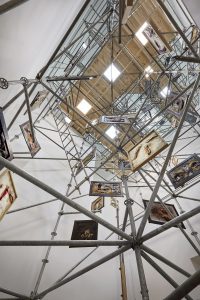
Figure 2. Victor Sonna, Tower of Babel, 2020, Van Abbemuseum. Photo: Ronald Smits
The accompanying installations showcase Sonna’s training as a visual artist as he meshes together the mediums of sculpture, metalwork and tapestry through the jaw-dropping 82-foot-high steam beam tower, from which his framed tapestries hang within the inner spire of the museum. This massive installation, titled the Tower of Babel (Fig. 2), contains the 152 tapestries that require multi-angled viewings because both sides of the frames are packed with layers of overlapping materials, from glued cane sugar to metallic nails and coins. Sonna gathered 152 European Gobelins tapestries, made between the eighteenth and twentieth century, which comprise his series Bleach and Dust, Sugar and Rubber and Maps. However, Sonna wanted to deconstruct the singular perception of these tapestries as representing “the history and prosperity of Europe” (Harmen van Dijk, TrouwNL, 18 July 2020, translated from Dutch by the author), by exposing the forms of exploitative slave labor used to extract materials such as sugar and rubber, which are imbedded and glued onto the surface of the tapestry. On Sonna’s website he states that this series approaches the “layering and displaying of connected histories that have been etched, trapped and layered in the earth” (Victor Sonna, http://victorsonna.com/site/news.php ).
Sonna presses different sculptural materials into the tapestries, creating multiple reliefs on their surfaces (Figs. 3,4,5). He “traps” metallic objects: coins, metal chains, and nails along with Kente cloth from Ghana that has been rolled up and sewn into the tapestries, and granulated cane sugar glued around the edges. He purposefully imbeds these materials into the textural DNA of the tapestry and locks each object inside it. The reliefs pushing out of the tapestry juxtapose the Gobelins framed surface with the visual effects of these contrasting materials, making us look again. The materiality of such commodities is weighed down by the history of their production, one fueled by the violence and death that characterizes the slave trade and its plantations. The artist’s desire to etch and trap together seemingly disparate materials creates a correlation between a shared European history of colonial exploitation and the creation of racial difference.

Figures 3, 4, 5. Victor Sonna, 2020, Van Abbemuseum. Photo: Ronald Smits
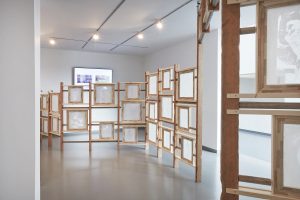
Figure 6. Victor Sonna, Wall of Reconciliation, 2020, Van Abbemuseum. Photo: Ronald Smits
Lastly, a striking section of this exhibition required two visitors to stand in front of one another, separated by a series of fifty-two silkscreen frames titled the Wall of Reconciliation (Fig. 6). The term “reconciliation” connotes Sonna’s desire to ensure that the printed image reconciled two opposing views. Every silkscreen required a dark backdrop in order to see the printed image; it is only visible if two visitors are standing on opposites sides of the same screen. Thus, the two viewers on opposite sides see the same explicit images of violence that are part of a series of drawings depicting slavery in Suriname, a Dutch colony that gained independence only in 1975. In Figure 7, the image depicts a young boy holding a rake, signifying the effects of enforced labor during the formative years of a child’s life and how it can mold a perception of the self that is intrinsically tied to an object of labor. Henceforth, each of these installations emphasized Sonna’s desire to deconstruct a biased and unilateral frame of reference.
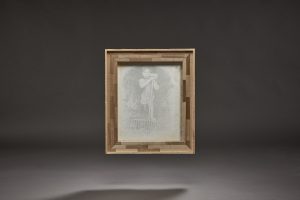
Figure 7. Victor Sonna, Wall of Reconciliation, 2020, Van Abbemuseum. Photo: Ronald Smits
1525, which has received acclaimed reviews in the Dutch press, is on display at the Van Abbemuseum until May 2021. Writers have collectively applauded the museum’s commitment to showcasing this stirring and historically fueled narrative. The Van Abbemuseum will continue to produce related public programming that is both accessible and reflective of its mission to highlight the legacies of Western colonialism in a Northern European context.
Finalists for the 2021 Morey and Barr Awards
posted by Allison Walters — Dec 16, 2020
CAA is pleased to announce the 2021 finalists for the Charles Rufus Morey Book Award and two Alfred H. Barr Jr. Awards. The winners of the three prizes, along with the recipients of other Awards for Distinction, will be announced in February 2021 and presented during Convocation in conjunction with CAA’s 109th Annual Conference, taking place on February 10-13, 2021.
2021 Charles Rufus Morey Book Award finalists
2021 Alfred H. Barr Jr. Award finalists
Louis Marchesano, ed., Käthe Kollwitz: Prints, Process, Politics, Getty Publications, 2020
2021 Alfred H. Barr Jr. Award for Smaller Museums, Libraries, Collections, and Exhibitions finalists
Andrea Rosen, Wood Gaylor and American Modernism, 1913-1936, Fleming Museum of Art, 2020
Jinah Kim and Todd Lewis, Dharma and Puṇya: Buddhist Ritual Art of Nepal, Brill, 2019
CAA Table Talk, November 18, 2020
posted by Allison Walters — Nov 24, 2020
We’re delighted to introduce CAA members to a new series of conversations between Meme Omogbai, our executive director and CEO, and N. Elizabeth Schlatter, the president of the CAA Board of Directors. Amidst so much change in our lives, workplaces, and world, CAA leadership sat down for an informal chat on how CAA is reshaping its efforts to provide access and resources where members need it most. Meme and Elizabeth will speak on the economic implications of COVID-19, the urgent importance of members’ scholarship, and the changing terrain of this cultural moment.
This discussion is centered around the Annual Conference and CAA’s pivot towards a digital-first platform, inspired by many of the questions submitted by members.
We would love to hear your questions for future CAA Table Talk conversations. Please send them in advance to: caanews@collegeart.org
SPEAKER BIOGRAPHIES
Meme Omogbai is Executive Director and CEO of College Art Association (CAA). Before joining CAA, Omogbai served as a member and past Board Chair of the New Jersey Historic Trust, one of four landmark entities dedicated to preservation of the state’s historic and cultural heritage and Montclair State University’s Advisory Board. Named one of 25 Influential Black Women in Business by The Network Journal, Meme has over 25 years of experience in corporate, government, higher education, and museum sectors. As the first American of African descent to chair the American Alliance of Museums, Omogbai led an initiative to rebrand the AAM as a global, inclusive alliance. While COO and Trustee, she spearheaded a major transformation in operating performance at the Newark Museum. During her time as Deputy Assistant Chancellor of New Jersey’s Department of Higher Education, Omogbai received Legislative acknowledgement and was recognized with the New Jersey Meritorious Service Award for her work on college affordability initiatives for families. Omogbai received her MBA from Rutgers University and holds a CPA. She did post-graduate work at Harvard University’s Executive Management Program and has earned the designation of Chartered Global Management Accountant. She studied global museum executive leadership at the J. Paul Getty Trust Museum Leadership Institute, where she also served on the faculty.
Elizabeth Schlatter is the President of the CAA Board of Directors and Deputy Director and Curator of Exhibitions at the University of Richmond Museums, Virginia. A museum administrator, curator, and writer, she focuses on modern and contemporary art and on topics related to curating and issues specific to university museums. At UR, she has curated more than 20 exhibitions, including recent group exhibitions of contemporary art such as “Crooked Data: (Mis)Information in Contemporary Art,” “Anti-Grand: Contemporary Perspectives on Landscape,” and “Art=Text=Art: Works by Contemporary Artists.” She also serves on and chairs various University and School of Arts & Sciences committees. Prior to the University of Richmond, she worked with exhibitions at the Smithsonian Institution Traveling Exhibition Service (SITES) in Washington, D.C, and in fundraising at the Contemporary Arts Museum, Houston. She is author ofMuseum Careers: A Practical Guide for Novices and Students (Left Coast Press, Inc.) and a contributor to A Life in Museums: Managing Your Museum Career (American Association of Museums). She has a BA in art history from Southwestern University in Texas, and an MA in art history from George Washington University.
2021 Distinguished Scholar: Salah M. Hassan
posted by Allison Walters — Nov 20, 2020
We’re delighted to announce the Distinguished Scholar session at the 109th CAA Annual Conference will honor Salah M. Hassan.

Salah M. Hassan. Photo: Jason Koski, Cornell University Photography (UREL)
Salah M. Hassan is the Goldwin Smith Professor of African and African Diaspora Art History and Visual Culture in the Department of Africana Studies and Research Center, as well as in the Department of History of Art and Visual Studies, and also serves as Director of the Institute for Comparative Modernities at Cornell University, Ithaca, USA. Hassan is also the Director of The Africa Institute, Sharjah, UAE. Hassan served as Professor of History of Art in African and African American Studies and Fine Art at Brandeis University, where he previously awarded the Madeleine Haas Russell Professorship in the Departments of African and Afro-American Studies and Fine Arts (2016-2017).
Hassan is a founding-editor of Nka: Journal of Contemporary African Art (Duke University Press). He currently serves as a member of the editorial advisory board of Atlantica, Journal of Curatorial Studies, and international Journal of Middle Eastern Studies, and served as consulting editor for African Arts. Hassan has contributed numerous essays to journals, anthologies, and exhibition catalogues of contemporary art, and has guest edited a special issue of SAQ: South Atlantic Quarterly, entitled African Modernism (2010). He has authored, edited, and co-edited several books, including Ibrahim El Salahi: A Visionary Modernist (2013); Darfur and the Crisis of Governance: A Critical Reader (2009); Diaspora, Memory, Place (2008); Unpacking Europe (2001); Authentic/Ex-Centric (2001; Gendered Visions: The Art of Contemporary Africana Women Artists (1997); and Art and Islamic Literacy among the Hausa of Northern Nigeria (1992), among others. Most recently, Hassan edited and introduced Ibrahim El-Salahi: Prison Notebook (MoMA and Sharjah Art Foundation Publications, 2018), and the forthcoming Ahmed Morsi: A Dialogic Imagination (Sharjah Art Foundation, 2020).
Hassan has curated a number of international exhibitions in museums and at major Biennales such as Venice and Dak’Art, including Authentic/Ex-Centric (49th Venice Biennale, 2001), Unpacking Europe (Rotterdam, 2001-02), and 3×3: Three Artists/Three: David Hammons, Maria Magdalena Campos-Pons, Pamela Z (Dak’Art, 2004), among others. He curated Ibrahim El Salahi: A Visionary Modernist was published in 2012 held at The Tate Modern in London (2013) after premiering at the Sharjah Art Museum in Sharjah, UAE (2013). In addition, he also co-curated The Khartoum School: The Making of the Modern Art Movement in Sudan, 1945-2016 (2016-2017) and When Art Becomes Liberty: The Egyptian Surrealists (1938–1965) (2016) funded by the Sharjah Art Foundation.
He is the recipient of fellowships including the J. Paul Getty Postdoctoral Fellowship as well as major grants from Sharjah Art Foundation, Ford Foundation, Rockefeller Foundation, Afrique en Créations, Andy Warhol Foundation for the Visual Arts, and the Prince Claus Fund.
This session will highlight his career and provide an opportunity for dialogue between and among colleagues. The panel will include Dr. Hassan as well as the following: Chika Okeke-Agulu (Princeton University); Elizabeth Giorgis (University of Addis Ababa); and Iftikhar Dadi (Cornell University).
The live online Q&A will be held Thursday, February 11, 2021, 10:30-11:15 am EST.
International News: Letters from the Asia Art Archive UnderLockdown (Part II)
posted by Allison Walters — Nov 17, 2020
This is Part II of an article that began last week in CAA News. It continues the coverage of life and work at the Asia Art Archive during the COVID-19 pandemic.
Mutual Aid, Cici Wu, Research Assistant, Asia Art Archive, New York
New York declared a state of emergency on March 7, 2020. I couldn’t foresee then that this would be my last chance to be in an art museum for many months. I was looking at the Portrait of America by Diego Rivera in the Whitney Museum, which he painted in 1933 for the Communist New Workers School in New York. The text panel said, “In keeping with the politics of the school, Rivera chose not to celebrate American values but instead to highlight uncomfortable truths about the class struggle and the country’s violence against African Americans.” In 1929, the crash of the US stock market caused many to question a capitalist system that seemed no longer compatible with the country’s democratic ideals. Artists resolved to use their art to effect change. Looking back at this period in history, when Mexican muralists were invited to make artworks by the State, it’s striking how artists were allowed to use their creativity and imagination so freely. They also imbued their art with a social role by depicting the real struggle of workers. It was uplifting.
A month before March 7, a memorial gathering for the Chinese doctor Li Wenliang was quietly held in Central Park (Fig. 1). The event was organized to stand against the further erosion of free speech in Mainland China. The park was not crowded. People were dispersed into smaller groups on a sunny afternoon, with murmurs, sighs, and tears. The flowers and banners carried words from the bottom of people’s hearts. At that moment, there was a hope that a little change could happen this time.
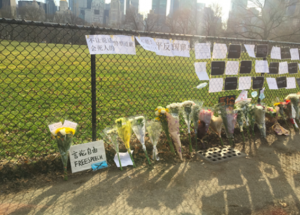
Figure 1. Memorial for Li Wenliang, Sheep Meadow in Central Park, New York, February 9th, 2020. Photo provided by the author.
After March 7, events seemed to accelerate, further unveiling lies, alongside vulnerability, rage and confusion. A wound was suddenly ripped open, resulting in a flowing river of blood. Sad news stories kept coming, one after another, from Italy, Iran, the UK, the Philippines, and the rest of the world. Airlines were collapsing. Small businesses were at risk. Middle-class and working-class people started worrying about their future. All of a sudden, restaurant workers, airline employees, and gig workers were on the verge of being laid off. Immigrants and undocumented residents without families were most at risk. More than ever, we learned that our social welfare was deeply tied to our immigration status in this country. We wondered, how are we going to collectively survive other crises, such as the huge environmental shifts and resulting displacements, that will come in the future?
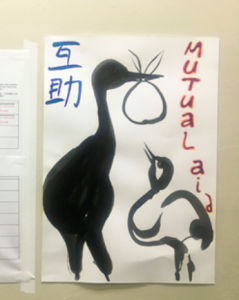
Figure 2. A mutual aid poster on display at 172 Henry Street in Chinatown, New York, April 25th, 2020. Photo provided by the author.
For a short time, New York became a site of discombobulation, isolation, and helplessness. The city was pale and empty. Workers in the arts, who were lucky enough to keep their jobs, started to work from home. Essential workers, including doctors, nurses, delivery drivers, and home caretakers, were getting off from work shattered. After a period of panic, some artists started to break out of their isolation and regather in small volunteer communities, helping food pantries, protesting against evictions, and organizing mask donations, all built upon the principle of Mutual Aid Community Agreements: “We Keep Us Safe” (Fig. 2).
The city began returning, bursting with idealistic energy. Most precious for the Asia Art Archive in America during this time has been the support and care we have been able to provide for each other. Invaluable weekly virtual meetings helped us stay connected and in dialogue, discussing together our changing thoughts throughout this critical time.
Our research collection, the Joan Lebold Cohen Archive Phase II was successfully launched online in the height of lockdown, on April 1. Three years after the launch of Phase I, the trips Joan Cohen took to China from the 1970s–2000s are finally fully available to explore and learn from: 16,453 color photographs of artists, artworks, studios, academies, exhibitions and scenes of everyday life. These images of a past world travelled through the years and arrived at a moment when nations are drifting apart towards isolation. In the midst of reimagining a new spatiotemporal organization of the world, the looks, smiles, and gestures Joan captured on film brought to mind air and light (Fig. 3).
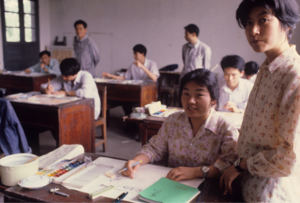
Figure 3. Students in art and design class at Guangzhou Art Academy, Guangzhou, China, 1980. Photo: Joan Lebold Cohen Archive, Asia Art Archive, NY
In Beijing and Hong Kong before returning to New York in February, I was saddened to have witnessed the virus hitting the collective body multiple times. Working through the Joan Lebold Cohen Archive was a healing process, to imagine myself traveling in time and giving light to the gaps of multiple pasts. I want to end here with a quote from the essay Solidarity/Susceptibility by Judith Butler (Social Text, 2018), from her remarks on José Muñoz, the Cuban American scholar of performance and queer studies who died in 2013, as an inspiration to think about archives and the new imaginary: “The potentialities that appear as rips and tears in the otherwise seamless future of no future for those abandoned by progress are immanent and furtive possibilities within the present, indicating that this time is also another time, and always has been; it opens toward a past and a future even when, politically, the force of oblivion seeks to cover over those very openings.”
Erasures and Experiments: The COVID-19 Story in India, Noopur Desai, Researcher, Asia Art Archive, India
Today, we are experiencing an unprecedented moment as we brave the COVID-19 crisis across the world. In India, the situation is complex, similar to many parts of the world, bearing multiple strands, with implications for various aspects of our lives. When the pandemic hit India in March of this year, though early cases were found in January, the country was going through a massive political movement demanding democratic constitutional rights. The announcement of a sudden lockdown across the country on March 22 resulted in the suspension of all social gatherings including, most importantly, the ongoing nationwide sit-in protests against the Citizenship Amendment Act and the National Register of Citizens in various cities and towns.
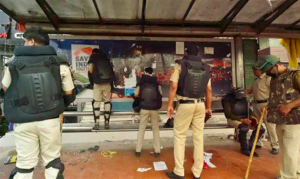
Figure 1. Graffiti and artworks at protest sites, removed by the police during the lockdown, “The Logical Indian,” March 27, 2020. Photo: Hindustan Times
In the midst of panic and uncertainty in conjunction with the mismanagement of the crisis, the previous two months began to appear a distant past with the erasure of politics and the transformation of public space during the lockdown. In effect, the public space was rather transformed, with images of a mass exodus as hundreds of thousands of migrant workers journeyed home from big cities after the closing down of markets, manufacturing units, and various laborer jobs. Combined with a sense of amnesia brought on by the spectacle surrounding the pandemic, the government actions (mis)used the situation to crackdown on dissenting voices, either by arresting social and political activists, defacing artworks and graffiti at protest sites (Fig. 1), or by exercising certain restrictions on media. Taken together these actions have highlighted the systemic inequality and repressive nature of the current regime.
Surrounded by this grave situation, various arts organizations, artists, and museums have had to reconfigure themselves. Several exhibitions and programs were canceled or postponed, and young arts practitioners moved back to their birthplaces or are struggling to survive in metropolitan centers like Delhi or Mumbai. Responding to the severity of the crisis, many arts practitioners and arts organizations have stepped up to create support systems, including grants for young artists, online displays of artworks, and the formation of chain-systems, wherein artists buy each other’s work. The arts community also created online auctions and other fundraising events to contribute to the relief work for migrant workers and other vulnerable populations.
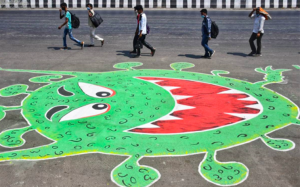
Figure 2. Migrant workers walk in front of a coronavirus graffiti in Mumbai, May 14, 2020. Photo: The Hindu
Physical distancing quickly resulted in digital proximity with the arrival of webinars and online exhibitions organized by museums and galleries, although the graph of the webinars seems to be “flattening” in recent times! However, the digital world has become an intrinsic part of our lives, whether it is through virtual studio visits, webinars, and simulated gallery tours or by creating online resources for teaching and learning. In terms of art education, studio-based practice has been replaced by experimentation with the digital, though only at a few schools, as most of them do not have the resources to run online programs. Nevertheless, there have been important instances where students have used digital platforms to organize their annual exhibitions, which are required for graduation, and which for the most part have not been able to take place physically. Though physical space is crucial in contemporary art practice, this intense effort to use alternative platforms has certainly paved the way for forming new aesthetic possibilities.
While we all are grappling with this strange time, at Asia Art Archive in India we continue building our online research collections and shaping new projects. As an online platform, we have been able to continue several aspects of our work by sharing digital resources and programming via our website. Despite this, we have also faced challenges in light of changing situations. Though our collections are available online, the groundwork to build those collections requires in-person visits to archives and libraries, access to review personal archives, resources to digitize the documents, and programs to introduce the archival collections; most of these activities have been brought to a halt for now. In the meantime, we are maintaining our spirits by planning and carrying out whatever aspects of our work we can, keeping in mind the need for physical distancing. At the same we are recalibrating our working methods as we venture into the “new normal.”
News from the Art and Academic Worlds
posted by CAA — Oct 14, 2020
|
|
|
|
|
|
Want articles like these in your inbox? Sign up for our weekly newsletter:
Recording now available–CAA Table Talk: Education and the Arts in a Time of Crisis
posted by CAA — Oct 05, 2020
Wednesday, October 14, 2020
12:00-12:30 PM (ET)
Free and open to the public
CLICK HERE TO JOIN THE CONVERSATION
We’re delighted to introduce CAA members to a new series of conversations between Meme Omogbai, our executive director and CEO, and N. Elizabeth Schlatter, the president of the CAA Board of Directors. Amidst so much change in our lives, workplaces, and world, join CAA leadership for an informal chat on how CAA is reshaping its efforts to provide access and resources where members need it most. Meme and Elizabeth will speak on the economic implications of COVID-19, the urgent importance of members’ scholarship, and the changing terrain of this cultural moment.
For best results, we recommend using the most up-to-date version of Chrome as your web browser. The conversation will be recorded and shared afterwards.
We would love to hear your questions, too. Please send them in advance to: caanews@collegeart.org
SPEAKER BIOGRAPHIES
Meme Omogbai is Executive Director and CEO of College Art Association (CAA). Before joining CAA, Omogbai served as a member and past Board Chair of the New Jersey Historic Trust, one of four landmark entities dedicated to preservation of the state’s historic and cultural heritage and Montclair State University’s Advisory Board. Named one of 25 Influential Black Women in Business by The Network Journal, Meme has over 25 years of experience in corporate, government, higher education, and museum sectors. As the first American of African descent to chair the American Alliance of Museums, Omogbai led an initiative to rebrand the AAM as a global, inclusive alliance. While COO and Trustee, she spearheaded a major transformation in operating performance at the Newark Museum. During her time as Deputy Assistant Chancellor of New Jersey’s Department of Higher Education, Omogbai received Legislative acknowledgement and was recognized with the New Jersey Meritorious Service Award for her work on college affordability initiatives for families. Omogbai received her MBA from Rutgers University and holds a CPA. She did post-graduate work at Harvard University’s Executive Management Program and has earned the designation of Chartered Global Management Accountant. She studied global museum executive leadership at the J. Paul Getty Trust Museum Leadership Institute, where she also served on the faculty.
N. Elizabeth Schlatter is the President of the CAA Board of Directors and Deputy Director and Curator of Exhibitions at the University of Richmond Museums, Virginia. A museum administrator, curator, and writer, she focuses on modern and contemporary art and on topics related to curating and issues specific to university museums. At UR, she has curated more than 20 exhibitions, including recent group exhibitions of contemporary art such as “Crooked Data: (Mis)Information in Contemporary Art,” “Anti-Grand: Contemporary Perspectives on Landscape,” and “Art=Text=Art: Works by Contemporary Artists.” She also serves on and chairs various University and School of Arts & Sciences committees. Prior to the University of Richmond, she worked with exhibitions at the Smithsonian Institution Traveling Exhibition Service (SITES) in Washington, D.C, and in fundraising at the Contemporary Arts Museum, Houston. She is author of Museum Careers: A Practical Guide for Novices and Students (Left Coast Press, Inc.) and a contributor to A Life in Museums: Managing Your Museum Career (American Association of Museums). She has a BA in art history from Southwestern University in Texas, and an MA in art history from George Washington University.
News from the Art and Academic Worlds
posted by CAA — Sep 09, 2020
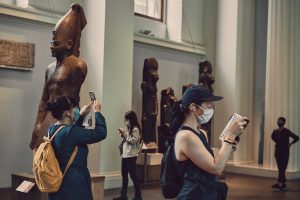
The British Museum recently reopened after a five-month closure due to coronavirus. Photo: Tom Jamieson for The New York Times
|
|
|
|
Want articles like these in your inbox? Sign up for our weekly newsletter:



